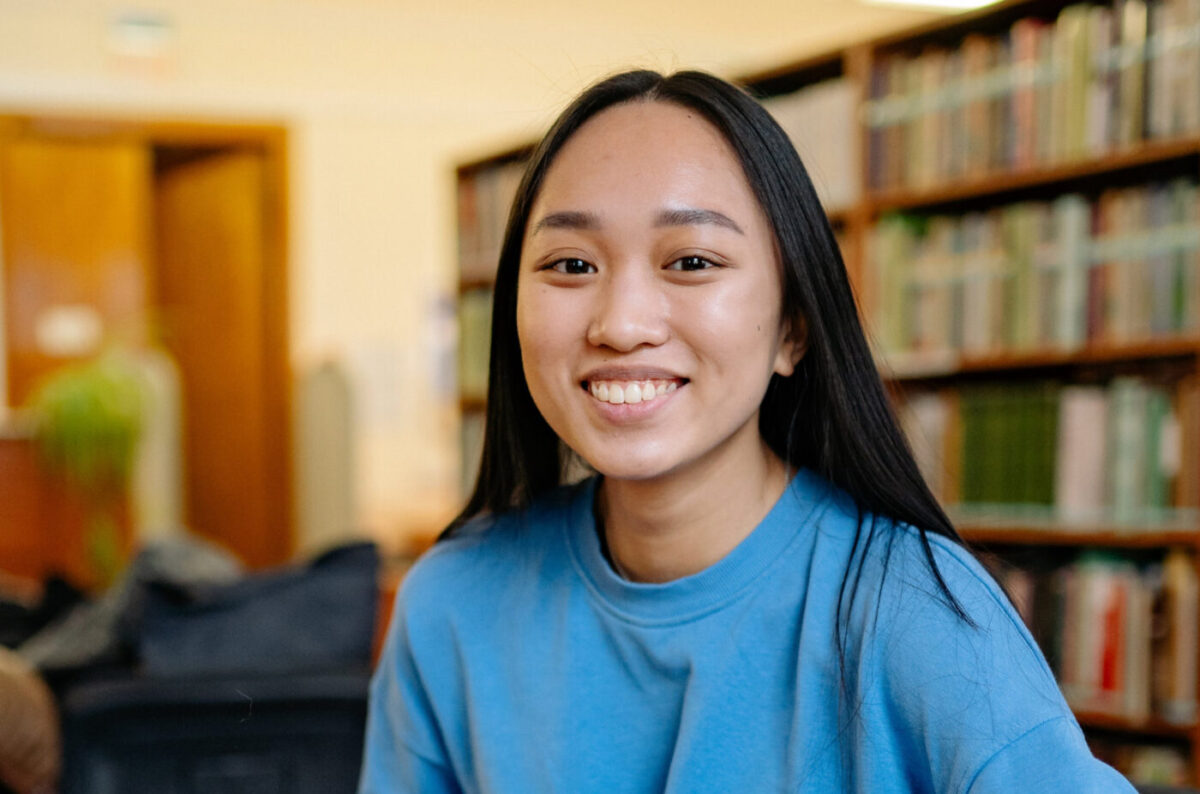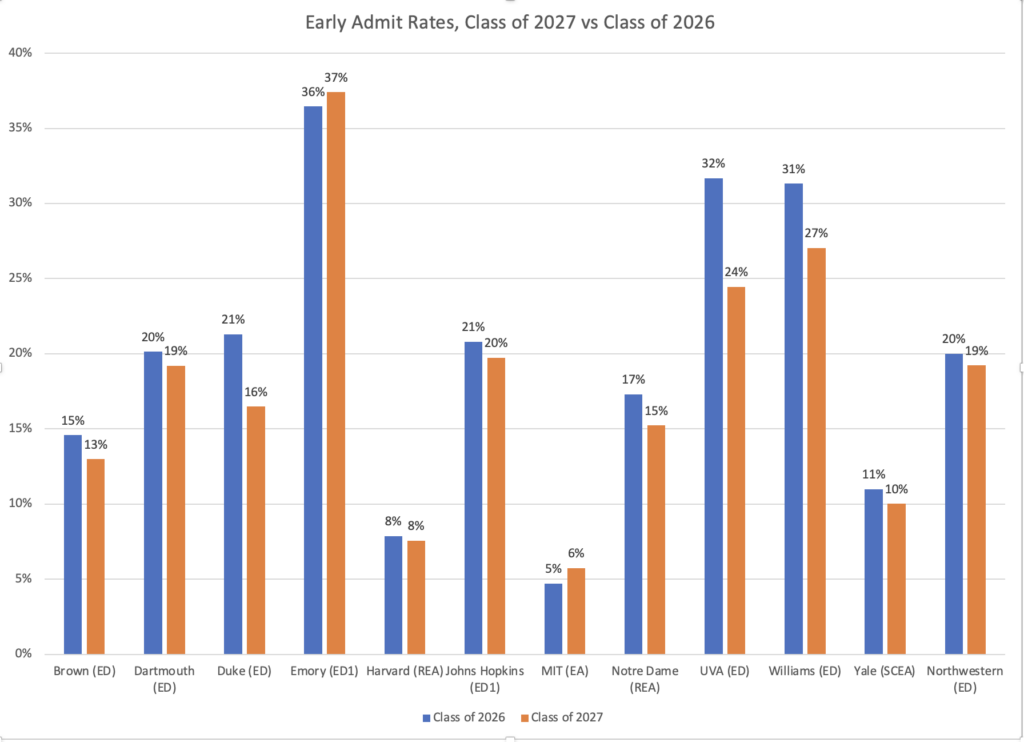Now that December’s flurry of early admissions decisions has abated, we can take a deep dive into the data to understand both the results and the institutional priorities that drove decision-making.
Spoiler alert: a growing number of applicants led to ever-lower early admit rates at many of the nation's top colleges and universities.
In our recent post, Reading the Tea Leaves: Early Application Trends, we noted that early applications submitted via the Common Application to highly selective schools (colleges and universities admitting fewer than 25 percent of their applicants) grew by 12 percent. Sure enough, as the chart below illustrates, the complete data set confirms this growing number of applications to top schools, which led to lower rates of admission, even in the early round.

MIT and Columbia were the outliers among this group of schools. MIT reinstated its admissions testing requirement, which no doubt led to its smaller early applicant pool. Columbia, which saw its US News and World Report ranking drop from number 2 to number 18, saw its ED application volume drop by 9 percent. It’s an interesting data point for those who see rankings as core to defining an institution’s prestige.

Essay Guidance
Get our expert guidance on your college essays.
Most of the top colleges that shared their data saw their early round admit rates drop a point or two. A few schools, notably Duke, UVA, and Williams, saw their ED admit rates drop by 5 percentage points, 8 percentage points, and 4 percentage points, respectively. Despite a more dramatic drop in application volume, MIT’s early action admit rate only ticked up 1 percentage point to 6 percent.

DOES APPLYING EARLY STILL CONFER AN ADVANTAGE?
At most colleges and universities that offer an early program, the answer is a definitive yes. We won’t have comparative data on the Class of 2027 early vs. regular rates of admission, but if history is any guide, we’ll continue to see rates of admission that are two to three times greater in early than regular.
There are two notable exceptions to this rule: MIT and Georgetown. Last year, MIT’s rate of admission in the early process was 4.72 percent and its overall rate of admission was 3.94 percent. (Really tough, no matter which way you look at it). Similarly, Georgetown had nearly identical rates of admission when you compare the early acceptance rate to its overall acceptance rate: 12.1 percent in early vs 11.7 percent.
BUILDING A MORE DIVERSE EARLY COHORT
Although top line admissions numbers tend to get the most attention, who a college admits in its early round speaks to important institutional priorities. Nowhere is that more visible than strategic efforts to diversify the pool of early admission admits. As noted by Dartmouth’s dean of admissions and financial aid Lee Coffin, “What you see in the early returns on the Class of 2027 are an expanding socioeconomic, geographic, racial, and international identity that continues to create an entering class that really represents the 21st century. It’s a multi-dimensional cohort of compelling individuals.”
Binding early decision programs have been criticized for years for favoring white and wealthier applicants. Questbridge, a national nonprofit organization, has become one of the most important pipelines that colleges have tapped to diversify the cohort of students admitted in the early round. This year, Questbridge had over 17,900 low-income and under-represented minority students applying for its Match Scholarship program. Of that group, nearly 10 percent (1,755 students) successfully matched at one of Questbridge’s colleges and university partners.
Colleges now routinely report data on Questbridge students who they admit (or match) in the early admissions process:
- Brown University admitted 62 Questbridge applicants.
- Dartmouth’s cohort of admitted Questbridge students grew to 47 students.
- Of the 800 students admitted through Early Decision at Duke University, 55 were QuestBridge matches, an all-time high.
- Yale University admitted 66 students through QuestBridge this year.
- Emory University admitted 61 QuestBridge students in its entering class.
- Washington University (St. Louis) admitted 75 QuestBridge Scholars.
MORE TO THE STORY
A few top private universities are notably silent, even on high-level details about their early pools: Princeton, Cornell and Stanford are among those schools that have chosen not to release admissions statistics during the early admissions cycle. Ostensibly, this is to lower the anxiety around the admissions process, but we believe a little more transparency would give students and families more tools to make better decisions.
As more details come into focus for the regular decision process, we’ll share our insights with you through our blog posts and signature counseling programs. At Top Tier Admissions, we believe that more transparency, not less, is the key to reducing anxiety, especially in a continually changing admissions landscape.
SENIOR SALUTE
As always, Top Tier Admissions salutes its wonderful senior class and their amazing successes in the early round!
- Class of 2028 Admissions: A Cycle Marked by New Challenges - May 13, 2024
- Global Campuses, Dual Degree and Joint Degree Programs: What You Need to Know - April 29, 2024
- College Admissions: The Year in Review - December 27, 2023


